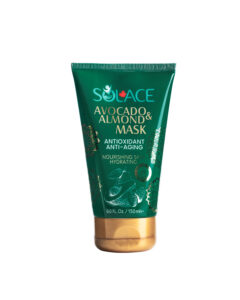
Genital Warts: Symptoms, Causes, and Prevention Methods
Genital warts are the most common sexually transmitted infection. It is caused by the human papilloma virus. The infection may be asymptomatic or may present itself through small soft warts that are usually seen in the genital and anal regions. Although it does not affect most people, in extreme conditions, it may turn into life-taking diseases like cancers due to HPV. In this paper, I look at the symptoms of genital warts and their causes, including effectively preventing them, to raise awareness of how to help individuals take the right measures to protect their health.
What Are Symptoms of Genital Warts?
The symptoms of the infection with genital warts may vary among people and very often appear not at all. When they do, the following might be observed:
- Small soft warts in the genital area
These are skin-colored or slightly darker warts that may appear singly or in groupings. They range in size from several millimeters to several centimeters. While they often can be painless, they may be slightly itchy or uncomfortable.
- Flat or Raised Warts
Genital warts may appear raised and fleshy or may be flat and almost imperceptible. The surface can be smooth or the wart can take the form of raised, dome-shaped bumps. Some warts may take on a cauliflower shape.
- Itching and Burning
The region in which warts may appear could be itchy or have a burning sensation. Such symptoms are most common if the warts become irritated, or their location is such that tending friction or pressure frequently comes to them.
- Bleeding or Discharge
In case the warts become very irritated or are broken open, they may bleed. In some people, there could also be an associated genital discharge with the warts.
- Discomfort During Sexual Intercourse
Large size of the warts may cause discomfort or pain during sexual intercourse, especially if the warts are inside the genital area or near the anus.
- Warts Hidden Inside the Genital Tract
Apart from that, warts may also grow inside the vagina, cervix, or even inside the urethra in women, which might not be detected without a medical checkup. These also sometimes result in bleeding or pain.

What Causes Genital Warts?
HPV can be transmitted on different occasions and through various media. It has also been found that there are some basic predisposing factors for the infection. The major ones are as follows:
- Infection with Human Papillomavirus (HPV)
The main cause of infection with genital warts is certain types of the human papilloma virus. There are over 100 different types of HPV, and some of these give rise to genital warts. Types 6 and 11 are the most common culprits for this infection.
- Transmission Through Sexual Contact
The modes of transmission of HPV infection primarily include skin-to-skin contact of the mucosa during sexual activity. This includes all types of sexual intercourse: vaginal, anal, and oral. Even non-penetrative sexual exposure can transmit the virus.
- Infection via Contaminated Surfaces
Being rare, some forms of transmission of human papillomavirus infection can take place with contact to an infected surface, such as by towels, underwear, and other medical apparatus. It occurs in conditions where the skin has cuts or abrasions so that the virus may enter the body.
- Poor Immunity
People suffering from immune system impairments, like chronic diseases and immunosuppressant drugs, are also at higher risk of developing this infection. An impaired immune system will not be able to provide resistance against the HPV infection.
- Having Multiple Sexual Partners
Individuals with multiple sexual partners have a greater risk of acquiring HPV and further genital warts. The number of partners directly coincides with the increased exposure to a person who may be infected with the virus.
- Early Initiation of Sexual Activity
Early initiation of sexual activities increases the chance of being infected with HPV. The immune system, in teenagers, is still developing and hence less able to successfully fight the infection.
- Smoking
Smoking enhances the tendency towards susceptibility to genital warts. With smoking, a person’s immunological capability reduces and his or her body becomes vulnerable to virus-based infections, like the ones caused by the human papilloma virus.
- Skin Lesions in the Genitalia
Cuts, abrasions, or any form of skin lesion in the genitals allows HPV to easily enter the body. These could be due to vigorous sexual activity or using sex toys.

How Can Genital Warts Be Prevented?
Prevention of genital warts entails various ways by which the likelihood of acquiring HPV infection is minimized. These include:
- Vaccination against HPV
One of the surest ways of preventing the infection of a genital wart is vaccination. Vaccines such as Gardasil and Cervarix offer protection from different strains of the virus that cause genital warts and cancers emanating from an HPV infection. The vaccines are normally recommended for young people before engaging in sexual activities, although they may be effective at older ages.
- Condom Use
This, in turn, will prevent infection with HPV when sexual exposure is covered by using condoms. Since condoms do not cover all skin surface areas, they reduce direct contact with the infected area, hence reducing chances of infection. They need to be used always and properly in every kind of sexual exposure: vaginal, anal, and oral.
- Limiting the Number of Sexual Partners
This can be done by reducing the number of sexual partners. The CDC reports that having multiple sexual partners increases the chances that a person will come into contact with an infected individual. Having a steady, monogamous relationship with an uninfected partner can go a long way in reducing the risk.
- Avoid Tobacco Use
Abstaining from or quitting tobacco use may strengthen the immune system. Smokers are more likely than nonsmokers to develop genital warts and other infections with HPV types. This may be because smoking weakens the immune system, making it harder for the body to fight off the virus.
- Education and Awareness
Education and counseling on HPV increase awareness of the modes of transmission and help in the avoidance of riskier behaviors. These educational programs in schools, universities, and healthcare centers will go a long way in significantly reducing the spread of the infection.
- Regular Medical Examinations
Regular visits to a doctor can help in early diagnosis of the infections due to HPV and their complications. In females, routine Pap smear examinations may detect abnormalities in cell developments over the cervix, which might be due to infection with the virus HPV.
- Enhancing Immunity
The HPV virus can be fought off with a good immune system. A good immunity fall can be prevented through healthy living that involves the correct amount of nutrition, proper exercises, adequate sleep, and management of stress.
Final Thoughts
Knowledge about genital warts engenders awareness about the condition itself, prevalence, and how prevention and management are necessary, especially for the high-risk groups. Those who are more vulnerable should be more careful with their sexual life and, at the occurrence of symptoms, seek a doctor without any further delay. Furthermore, improvements in healthy lifestyles, easily accessible education, and healthcare services may drastically enhance the public health of those worst off.
References








No comment yet, add your voice below!